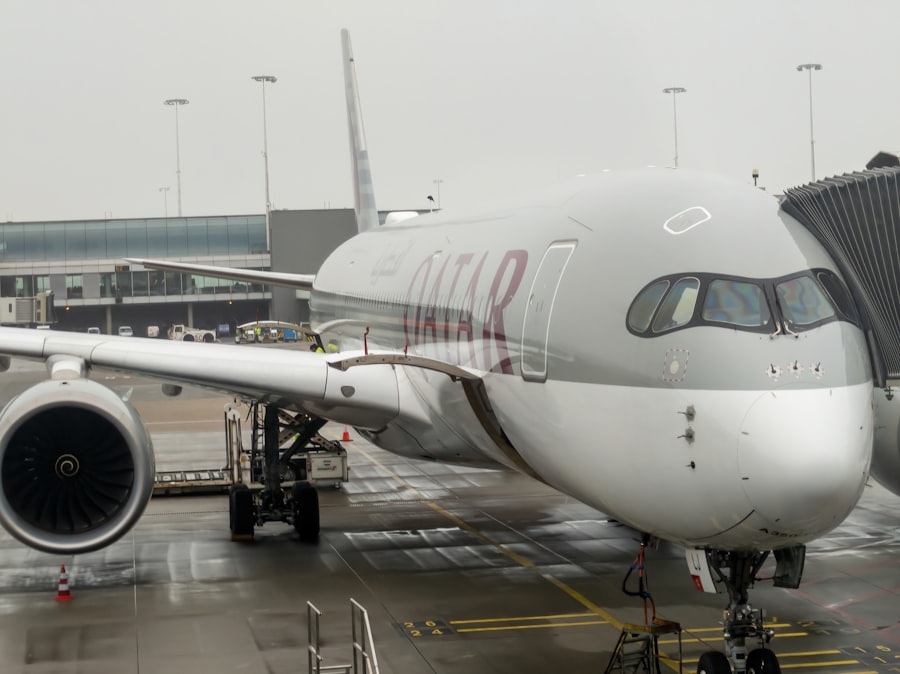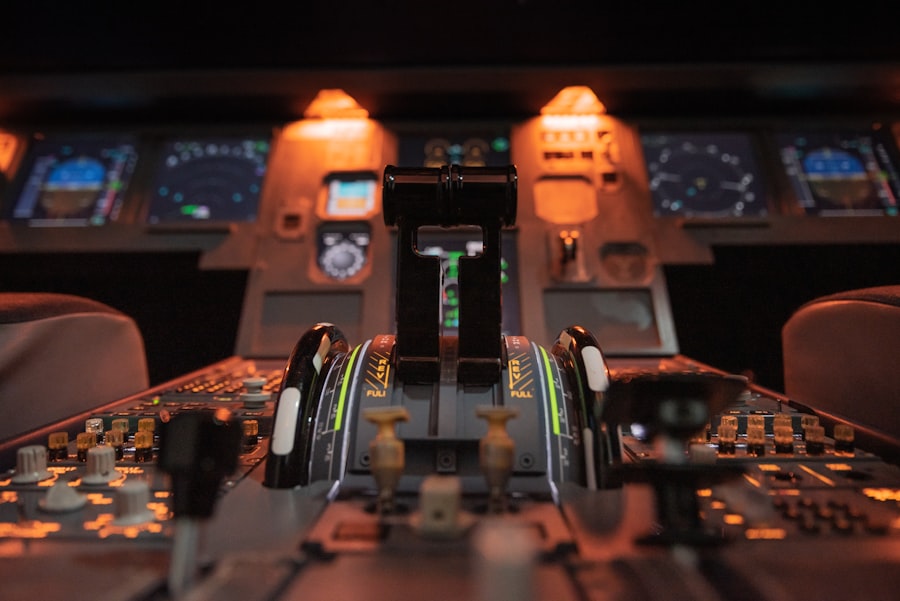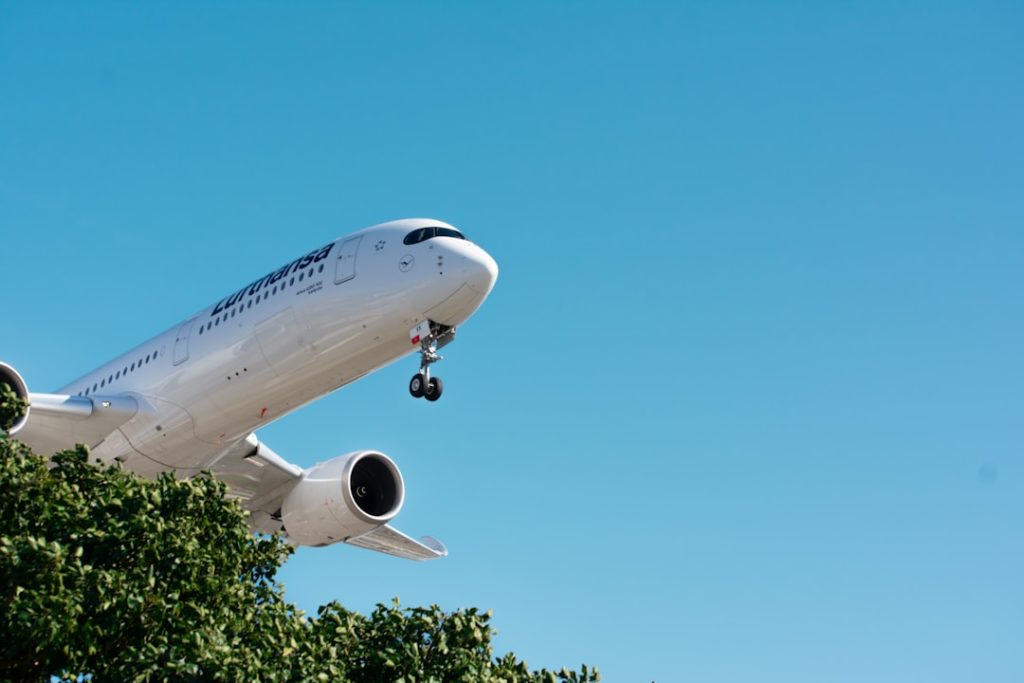The aviation industry has witnessed a significant transformation in recent years, particularly in the realm of materials and design. The introduction of advanced composite materials, such as carbon fiber reinforced polymers (CFRP), has revolutionized aircraft construction. These materials are not only lighter than traditional aluminum but also offer superior strength and durability.
For instance, the Boeing 787 Dreamliner utilizes approximately 50% composite materials, which contributes to its overall weight reduction and enhances fuel efficiency. This shift towards lightweight materials allows for increased payload capacity and improved aerodynamic performance, ultimately leading to lower operational costs for airlines. In addition to the use of advanced materials, innovative design techniques have emerged that optimize the aerodynamics of aircraft.
Computational fluid dynamics (CFD) simulations enable engineers to analyze airflow around the aircraft, leading to more efficient shapes that minimize drag. The integration of 3D printing technology into the manufacturing process has also allowed for the creation of complex geometries that were previously impossible to achieve with traditional methods. This not only reduces waste but also shortens production times, making it easier for manufacturers to respond to market demands.
The combination of advanced materials and cutting-edge design principles is paving the way for a new generation of aircraft that are not only more efficient but also more environmentally friendly.
Key Takeaways
- Advanced materials and design contribute to the overall efficiency and performance of the aircraft.
- Fuel efficiency and range are key factors in the design of modern aircraft, allowing for longer flights and reduced environmental impact.
- A quiet and comfortable cabin enhances the passenger experience and reduces fatigue during long flights.
- Advanced cockpit technology improves safety and efficiency for pilots, enhancing the overall flying experience.
- Innovative wing design plays a crucial role in the performance and environmental sustainability of the aircraft.
Fuel Efficiency and Range
Fuel efficiency remains a paramount concern for airlines, especially in an era where operational costs are under constant scrutiny. The development of next-generation engines, such as the Pratt & Whitney Geared Turbofan, exemplifies the strides being made in this area. These engines utilize a unique gear system that allows the fan to spin at a different speed than the engine core, resulting in significant reductions in fuel consumption—up to 16% compared to previous models.
This innovation not only lowers operating costs but also reduces greenhouse gas emissions, aligning with global sustainability goals. Moreover, advancements in aerodynamics play a crucial role in enhancing the range of modern aircraft. Winglets, which are vertical extensions at the tips of wings, have become a standard feature on many commercial jets.
These structures reduce vortex drag and improve lift-to-drag ratios, allowing aircraft to fly longer distances on less fuel. For example, the Airbus A320neo family incorporates winglets that contribute to a range increase of up to 500 nautical miles compared to its predecessors. As airlines continue to seek ways to optimize their fleets for both performance and environmental impact, innovations in fuel efficiency and range will remain at the forefront of aircraft design.
Quiet and Comfortable Cabin

Passenger comfort is a critical aspect of modern air travel, and advancements in cabin design have significantly improved the flying experience. Noise reduction technologies have become increasingly sophisticated, with manufacturers implementing soundproofing materials and innovative cabin layouts that minimize ambient noise levels. The use of quieter engines, such as those found on the Boeing 737 MAX, has also contributed to a more serene cabin environment.
These engines are designed with features like chevrons on the nacelles that help reduce noise during takeoff and landing, creating a more pleasant atmosphere for passengers. In addition to noise reduction, cabin ergonomics have been enhanced through thoughtful design choices. Airlines are investing in wider seats with more legroom, improved lighting systems that mimic natural daylight, and advanced air filtration systems that ensure better air quality throughout the flight.
The introduction of mood lighting systems allows airlines to create a more relaxing ambiance during long-haul flights, helping passengers adjust to time zone changes more effectively. These innovations not only enhance passenger satisfaction but also contribute to overall well-being during air travel.
Advanced Cockpit Technology
| Metrics | Data |
|---|---|
| Number of Advanced Cockpit Installations | 200 |
| Cost Savings from Advanced Cockpit Technology | 20% |
| Improved Fuel Efficiency | 15% |
| Reduction in Pilot Workload | 30% |
The cockpit of modern aircraft has evolved into a highly sophisticated environment equipped with advanced technology that enhances safety and operational efficiency. One notable advancement is the implementation of glass cockpit displays, which replace traditional analog instruments with digital screens that provide pilots with real-time data on flight parameters. This transition allows for easier interpretation of critical information and reduces pilot workload during complex flight operations.
Furthermore, advancements in automation have led to the development of fly-by-wire systems that enhance aircraft control and stability. These systems utilize electronic signals rather than mechanical linkages to control flight surfaces, allowing for more precise handling characteristics. The Airbus A350 XWB is an excellent example of this technology in action, featuring an advanced fly-by-wire system that improves maneuverability while also providing built-in redundancy for safety.
As cockpit technology continues to advance, pilots are equipped with tools that not only enhance their situational awareness but also contribute to safer and more efficient flight operations.
Innovative Wing Design
The design of an aircraft’s wings is crucial for its overall performance, and recent innovations have led to significant improvements in aerodynamic efficiency. One such innovation is the use of morphing wing technology, which allows wings to change shape during flight to optimize performance under varying conditions. This adaptability can enhance lift during takeoff and landing while reducing drag during cruise flight.
Research projects like NASA’s Adaptive Compliant Trailing Edge (ACTE) have demonstrated the potential benefits of this technology, paving the way for future commercial applications. Additionally, the integration of advanced wing designs such as blended wing bodies (BWB) is gaining traction in aerospace engineering. The BWB concept merges the wings and fuselage into a single aerodynamic structure, resulting in reduced drag and increased fuel efficiency.
The Boeing X-48 experimental aircraft serves as a prototype for this design philosophy, showcasing how innovative wing configurations can lead to substantial improvements in performance metrics. As engineers continue to explore new wing designs, the potential for enhanced aerodynamic efficiency will play a pivotal role in shaping the future of aviation.
Enhanced Passenger Experience

The passenger experience has become a focal point for airlines seeking to differentiate themselves in a competitive market. Innovations aimed at enhancing comfort and convenience are being implemented across various aspects of air travel. For instance, airlines are increasingly adopting in-flight entertainment systems that offer a wide range of options, from movies and TV shows to interactive games and educational content.
The introduction of high-speed Wi-Fi connectivity has further transformed the flying experience by allowing passengers to stay connected during their journey. Moreover, personalized services are becoming more prevalent as airlines leverage data analytics to tailor offerings to individual preferences. Frequent flyer programs now utilize sophisticated algorithms to provide customized recommendations based on past travel behavior, ensuring that passengers receive relevant offers and services.
Additionally, advancements in mobile technology have enabled seamless check-in processes and real-time updates on flight status, reducing stress and enhancing overall satisfaction. As airlines continue to innovate in this area, the focus on enhancing the passenger experience will remain a key driver of success.
Advanced Avionics and Systems
The integration of advanced avionics systems has transformed how aircraft operate and navigate through increasingly complex airspace environments. Modern aircraft are equipped with sophisticated navigation systems that utilize satellite-based technologies such as Global Positioning System (GPS) and Automatic Dependent Surveillance–Broadcast (ADS-B). These systems provide pilots with precise location data and situational awareness, enabling safer navigation even in challenging weather conditions or congested airspace.
Additionally, advancements in predictive maintenance technologies are revolutionizing how airlines manage their fleets. By utilizing data analytics and machine learning algorithms, airlines can monitor aircraft systems in real-time and predict potential failures before they occur. This proactive approach not only enhances safety but also reduces downtime and maintenance costs.
For example, Delta Air Lines has implemented predictive maintenance strategies that have resulted in significant savings by minimizing unscheduled maintenance events. As avionics technology continues to evolve, its impact on operational efficiency and safety will be profound.
Environmental Sustainability
As global awareness of environmental issues grows, the aviation industry is increasingly focused on sustainability initiatives aimed at reducing its carbon footprint. One significant development is the exploration of sustainable aviation fuels (SAFs), which are derived from renewable resources such as plant materials or waste products. These fuels can significantly reduce greenhouse gas emissions compared to traditional jet fuels when used in existing aircraft engines.
Airlines like KLM and United Airlines are already investing in SAF production facilities and partnerships to promote their use within their fleets. In addition to alternative fuels, manufacturers are exploring electric and hybrid propulsion systems as viable options for future aircraft designs. Companies like Airbus are actively developing concepts for electric regional aircraft that could revolutionize short-haul travel by offering zero-emission flights.
The E-Fan X project is an example of this initiative, showcasing how hybrid-electric technology can be integrated into commercial aviation while maintaining performance standards. Furthermore, regulatory bodies are beginning to implement stricter emissions standards that encourage airlines and manufacturers to adopt greener practices. The International Civil Aviation Organization (ICAO) has set ambitious targets for reducing aviation emissions by 50% by 2050 compared to 2005 levels.
This commitment has spurred innovation across the industry as stakeholders collaborate on solutions that prioritize environmental sustainability while ensuring safe and efficient air travel for future generations.


